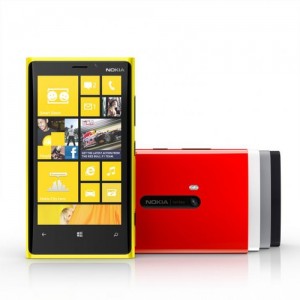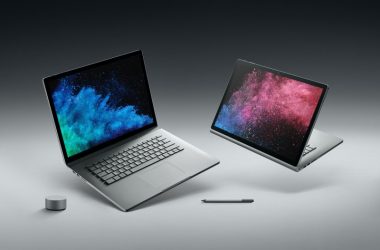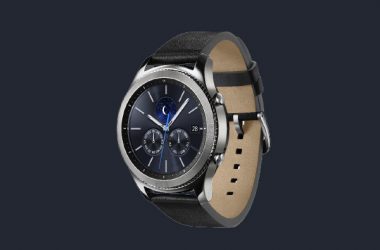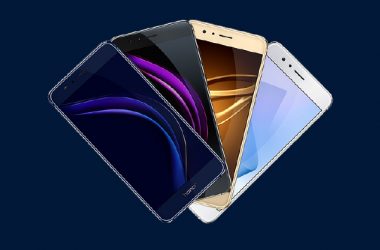We’ve always been fond of the build quality of Nokia handsets and the Lumia 920 is certainly no different. Construction feels exceptional. We love how the device curves into your hands when it’s picked up. You can immediately tell that a lot of thought has gone into the ergonomics. Despite b eing a pre-production model, there were no creaks, no rattles and no signs at all of poor craftsmanship.
eing a pre-production model, there were no creaks, no rattles and no signs at all of poor craftsmanship.
We also love the look of the Lumia 920. Unlike most other smartphones on the market, the design is fresh and inviting. The bright colours on offer may not suit all tastes, but we quickly grew fond of both the red and yellow models we used in the demonstration. For those who prefer more traditional colours, the Lumia 920 is available in black and white models, too. We did note that the black model has a matte finish whereas the brighter red, yellow and white models are a much glossier surface.
Download our Smartphone Super Guide for iPad
There are some small but appreciated design touches, too. The company told us users of previous Lumia devices like the Lumia 900 and Lumia 800 complained that the power, volume and home buttons scratched too easily. On the Lumia 920, these buttons are now made from ceramic, which Nokia says will prevent these scratches. It’s only a small touch, but one we suspect will be appreciated by plenty of users.
With all that being said, the Lumia 920 is thicker (10.7mm) and heavier (182g) than most other smartphones on the market. While we can appreciate the amount of tech that’s packed into that shell, particularly the camera and its floating lens optical image stabilisation system, f2.0 aperture and backside illuminated sensor, users who long for a thin and light phone are likely to be left disappointed. The weight and girth of the Lumia 920 is immediately noticeable, even coming from a large device like the Samsung Galaxy S III. The screen of the Lumia 920 immediately looks very impressive. It’s a 4.5in panel with a resolution of 1280×760, packing a pixel density of 332ppi. Colours are vibrant and eye catching and viewing angles are excellent. We loaded up a few text-heavy pages in the Internet Explorer browser and found text to be super crisp and clear, with no visible aberrations. It’s almost impossible to distinguish individual pixels. We suspect the only way you’d be able to do so is with a magnifying glass.
We weren’t able to test the Lumia 920 in direct sunlight outdoors, but we’ll be keen to see how it holds up when we get our hands on a review unit for a longer play. At full brightness in an office room, the Lumia 920’s display was exceptionally bright.
Performance was also notable. Windows Phone has always been an efficient and smooth operating system, but we experienced no lag or slowdown at all in our brief play with the Lumia 920. Apps opened quickly, multitasking was fast and efficient and swiping through your home screen live tiles is smooth and slick. In a direct comparison with an iPhone 5, the Lumia 920 launched the camera app from standby quicker than Apple’s flagship. It was only a matter of milliseconds, but it’s pretty clear that performance isn’t going to be an issue.
We weren’t able to take any test shots of the camera away with us, so we can’t comment on image performance. The camera app is fast, however, and there are plenty of settings to tinker with. Nokia’s multiple camera modes, which it calls lenses, look impressive. There’s a panorama lens to capture panorama shots (obviously), a cinemagraph mode that captures movement and turns still shots into a GIF file and a SmartShot lens that captures multiple photos and then allows you to remove elements from an image, like someone walking in the background of your photo, for example.
We were also given a demo of some of the accessories that Nokia and third-party manufacturers will sell for the Lumia 920. Undoubtedly the best of the bunch are the wireless charging accessories. There’s a wireless charging pillow by Fatboy, a Nokia-branded wireless charging plate and a JBL speaker that will charge the phone and enable one-touch Bluetooth pairing using NFC. Because these accessories all work on the Qi wireless charging standard, they will be compatible with future models and should even work with non-Nokia smartphones that feature Qi wireless charging capabilities.





